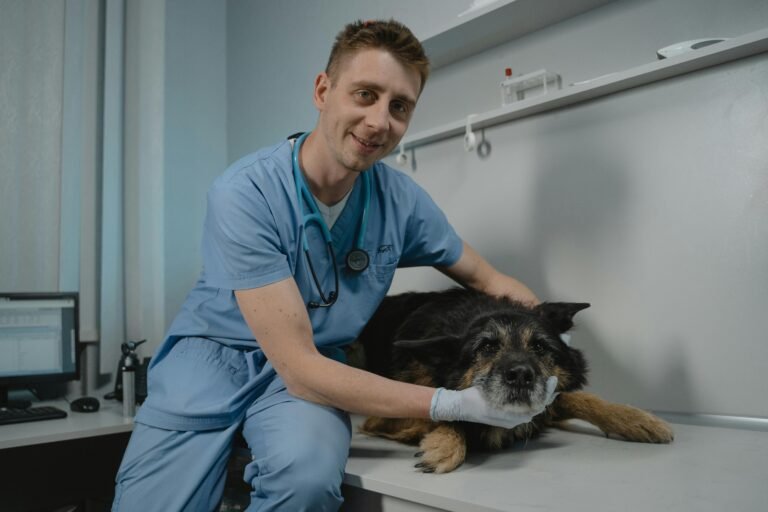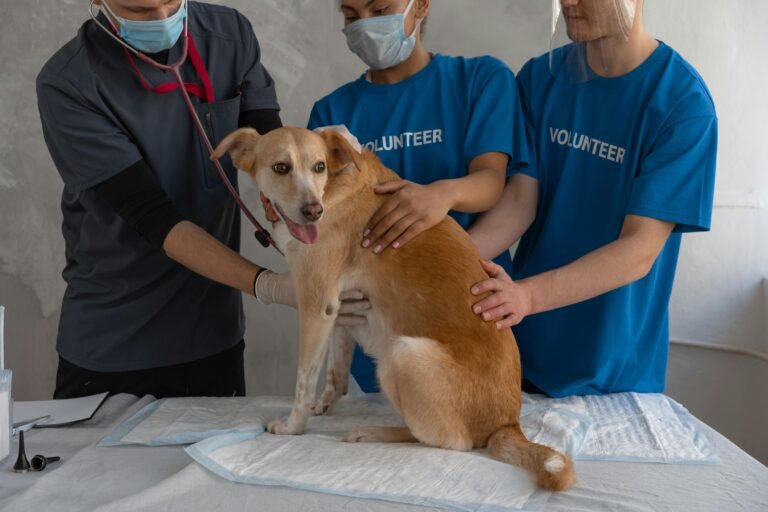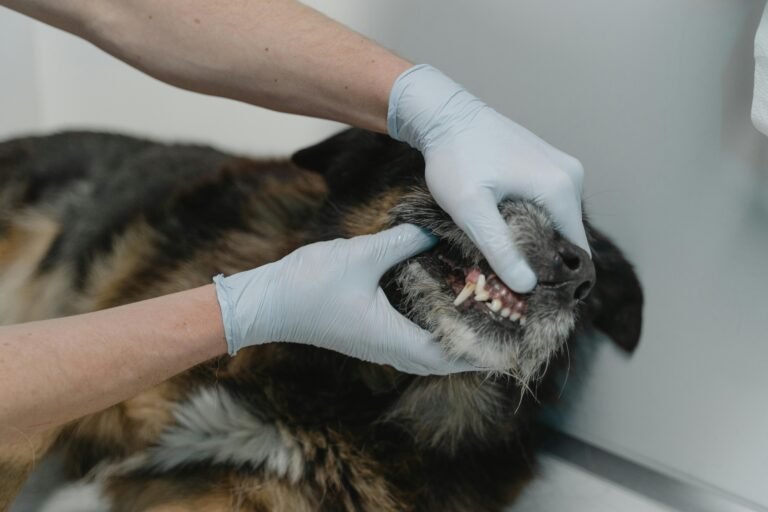Introduction
Our canine companions bring endless joy into our lives, but just like people they can experience a wide range of health issues. Understanding the most common problems, recognizing the early signs, and taking preventive steps can help ensure that your dog stays healthy and comfortable throughout their life. This guide explores the most frequently encountered canine health issues – from pesky parasites to more serious conditions – and offers practical tips for prevention, recognition, and treatment.
Parasites: Fleas, Ticks and Worms
External and internal parasites are among the most common health problems for dogs. Fleas and ticks irritate the skin and can transmit diseases, while worms live inside your dog’s intestines or heart.
- Fleas and ticks: These tiny pests feed on your dog’s blood, causing itching, hair loss and sometimes allergic reactions. They can also transmit diseases like Lyme disease and ehrlichiosis. Prevent infestations by using veterinarian‑recommended preventives year‑round, checking your dog’s coat after outdoor adventures, and promptly removing any ticks you find.
- Intestinal worms: Hookworms, roundworms, whipworms and tapeworms are common. Symptoms include weight loss, dull coat, vomiting, diarrhea or visible worms in the stool. Prevention includes regular deworming schedules, keeping your dog’s environment clean, and disposing of feces promptly.
- Heartworms: Transmitted by mosquitoes, heartworm larvae mature in the heart and lungs, leading to coughing, fatigue and potentially fatal heart failure. Preventative medications are essential – administer them monthly as prescribed by your vet.
Skin Issues and Allergies
A healthy skin and coat are signs of a healthy dog. Various factors can disturb the skin, leading to irritation, itching or infection.
- Allergic dermatitis: Dogs can be allergic to flea saliva, environmental allergens like pollen and dust, or ingredients in their food. Symptoms include persistent itching, licking, ear infections and hot spots (red, moist, inflamed areas). Treatment involves identifying the allergen with your vet, using antihistamines or steroids to control itching, and bathing your dog with soothing shampoos.
- Hot spots and bacterial infections: Moist dermatitis often starts with a small scratch or bite that becomes infected by bacteria when the dog licks or chews the area. Your vet may shave the area, clean the wound, and prescribe topical or oral antibiotics.
- Fungal infections: Ringworm and yeast infections cause circular patches of hair loss, flaky skin and a musty odor. They are contagious to other pets and people, so prompt veterinary treatment is important.
Digestive Problems
Digestive upset is common in dogs, ranging from mild episodes of diarrhea to more serious conditions like pancreatitis.
- Dietary indiscretion: Dogs are notorious for eating things they shouldn’t, such as table scraps, trash or foreign objects. Vomiting, diarrhea and abdominal pain often follow. Keep your dog away from harmful foods (like chocolate, grapes and onions) and supervise them carefully.
- Gastroenteritis: Inflammation of the stomach and intestines can be caused by viruses, bacteria or spoiled food. Symptoms include vomiting, diarrhea, lethargy and dehydration. Mild cases often resolve with a bland diet and fluids, but persistent symptoms require veterinary care.
- Pancreatitis: An inflamed pancreas causes severe abdominal pain, vomiting and loss of appetite. High‑fat diets, obesity and table‑food treats are common triggers. Treatment involves hospitalization, IV fluids, pain management and strict dietary changes.
Dental Disease
Oral health is often overlooked, yet periodontal disease affects up to 80% of dogs over three years of age. Plaque and tartar build up along the gum line, leading to gingivitis, tooth loss and systemic infections.
- Brush your dog’s teeth regularly with a canine toothpaste and provide dental chews or toys that help remove plaque.
- Schedule professional dental cleanings with your veterinarian – these procedures remove tartar below the gum line and address hidden issues.
- Watch for bad breath, red gums, drooling or difficulty chewing – these signs warrant a dental check.
Joint Disorders and Mobility Issues
As dogs age, joints naturally deteriorate, but some breeds are prone to congenital or developmental issues.
- Arthritis: Osteoarthritis results from wear and tear on joint cartilage, causing pain, stiffness and reluctance to move. Manage arthritis with weight control, moderate exercise, joint supplements (glucosamine and chondroitin), anti‑inflammatory medications and comfortable bedding.
- Hip dysplasia: Larger breeds like German Shepherds and Labrador Retrievers may inherit abnormal hip joint formation. Signs include bunny‑hopping gait, difficulty rising, and decreased activity. Early diagnosis via X‑rays enables management with physical therapy, weight control, supplements or surgery.
- Cruciate ligament injuries: Sudden lameness in a hind leg may indicate a torn cranial cruciate ligament (similar to the ACL in people). Treatment ranges from rest and anti‑inflammatory medications to corrective surgery.
Obesity and Metabolic Disorders
Being overweight isn’t just a cosmetic issue – excess pounds put stress on joints and organs and predispose dogs to metabolic diseases.
- Obesity: Overfeeding, too many treats and lack of exercise are the usual culprits. Maintain your dog’s ideal weight with portion control, high‑quality diet and daily walks or play sessions.
- Diabetes mellitus: Middle‑aged dogs, especially unspayed females, are at higher risk. Symptoms include increased thirst and urination, weight loss despite a good appetite, and cataracts. Management includes insulin injections, consistent feeding schedules and regular monitoring.
- Hypothyroidism: When the thyroid gland doesn’t produce enough hormones, dogs may gain weight, have a dull coat and become lethargic. Thyroid hormone supplementation, prescribed by your vet, corrects the imbalance.
Ear and Eye Conditions
Routine ear and eye care prevents painful infections and vision loss.
- Ear infections: Dogs with floppy ears or those that swim often are susceptible. Signs include head shaking, scratching, odor and discharge. Clean ears gently, keep them dry, and seek veterinary care at the first sign of trouble.
- Ear mites: Tiny parasites common in puppies cause intense itching and dark debris in the ear canal. They are treated with medication prescribed by your vet.
- Eye problems: Conjunctivitis, dry eye, cataracts and glaucoma can affect dogs. Watch for redness, discharge, cloudiness or squinting. Prompt veterinary attention is essential – some conditions can lead to blindness if untreated.
Infectious Diseases
Preventable viral and bacterial diseases remain a significant threat, especially for puppies and unvaccinated dogs.
- Parvovirus: Highly contagious and often fatal, parvo attacks the gut and immune system. Puppies are most at risk. Vaccination is highly effective – keep unvaccinated puppies away from public areas until fully immunized.
- Distemper: This virus affects the respiratory, gastrointestinal and nervous systems. Symptoms include coughing, fever, nasal discharge and seizures. Vaccination is the best protection.
- Kennel cough: A catch‑all term for contagious respiratory infections. A hacking cough is the hallmark. Vaccinations against Bordetella and parainfluenza reduce the risk, especially before boarding, grooming or dog park visits.
- Leptospirosis and Lyme disease: Bacteria transmitted through contaminated water or tick bites can cause kidney failure, joint pain and fever. Vaccinations and tick prevention help protect your dog.
Cancer and Tumors
Cancer becomes more common with age and can affect any part of the body. Lumps, bumps, changes in weight or appetite, persistent sores, or difficulty breathing warrant a veterinary exam.
- Mast cell tumors: These skin tumors can look like benign lumps. Early surgical removal improves outcomes.
- Lymphoma: A cancer of the lymph nodes causing swelling, lethargy and weight loss. Treatment often involves chemotherapy.
- Hemangiosarcoma: A cancer of blood vessel cells, often affecting the spleen or heart. It is aggressive and may cause sudden collapse from internal bleeding.
Early detection through regular “head‑to‑tail” exams at home and routine vet visits is key. Your vet may recommend diagnostic tests like biopsies, bloodwork or imaging to evaluate suspicious masses.
The Importance of Regular Veterinary Check‑Ups
Even attentive pet parents can miss early signs of illness. Routine veterinary care ensures your dog receives timely vaccines, parasite prevention and health screenings. Your vet will check your dog’s teeth, ears, eyes and heart; palpate the abdomen for lumps; and discuss any behavioral or dietary concerns. Senior dogs benefit from biannual exams and blood work to monitor organ function.
Conclusion
Being proactive about your dog’s health helps prevent small issues from becoming major problems. Recognize early warning signs, follow your veterinarian’s recommendations for diet, vaccination and parasite control, and schedule regular check‑ups. By understanding common canine health issues and responding promptly, you can give your beloved companion the healthiest, happiest life possible.






